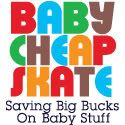It is very simple to make your own compost bin and making your own can save you lots of money. I have created a short video of how to make your own compost bin.
- Purchase a round trash can with a locking lid. We got ours at Home Depot, for $15. They are available at most superstores, garden centers, and home improvement stores.
- Set your drill up with a 1/4" or 1/2" drill bit. (or use both)
- Drill holes all over the trash can. You can write words, drill pictures or just make a random pattern but be sure that there are plenty of holes in the can from the top to the bottom allowing oxygen to get in the container. Do not drill holes in your lid or the compost materials will get wet during rain.
Congratulations!! You just made a compost bin.
Now what can you put in it? Almost anything! The EPA has created a simple list of things that are safe to compost and a list of things that are not.
Safe:
-Animal manure
-Cardboard rolls
-Clean paper
-Coffee grounds and filters
-Cotton rags
-Dryer and vacuum cleaner lint
-Eggshells
-Fireplace ashes
-Fruits and vegetables
-Grass clippings
-Hair and fur
-Hay and straw
-Houseplants
-Leaves
-Nut shells
-Sawdust
-Shredded newspaper
-Tea bags
-Wood chips
-Wool rags
-Yard trimmings
Not Safe/Reason Why:
-Black walnut tree leaves or twigs/Releases substances that might be harmful to plants
-Coal or charcoal ash /Might contain substances harmful to plants
-Dairy products (e.g., butter, egg yolks, milk, sour cream, yogurt) /Create odor problems and attract pests such as rodents and flies
-Diseased or insect-ridden plants /Diseases or insects might survive and be transferred back to other plants
-Fats, grease, lard, or oils /Create odor problems and attract pests such as rodents and flies
-Meat or fish bones and scraps /Create odor problems and attract pests such as rodents and flies
-Pet wastes (e.g., dog or cat feces, soiled cat litter) /Might contain parasites, bacteria, germs, pathogens, and viruses harmful to humans
-Yard trimmings treated with chemical pesticides /Might kill beneficial composting organisms
Once you've started adding materials to the compost bin you will need to begin rolling the bin at least once a week or up to once daily. Composting in a 32 gallon trash can that is rotated (rolled) at least once a week will produce ready to use compost in 6-8 weeks. The compost material can be added to your garden or lawn to help restore nutrients and to help condition the soil. You should not use compost in potting soil for house plants.
Good luck on your composting adventure! Feel free to stop by, share your experiences and ask questions along the way.

















0 comments:
Post a Comment